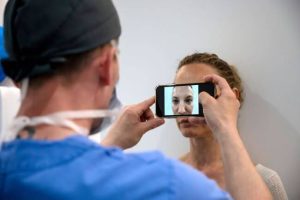Historically, when people think of medical imaging, diagnostic imaging comes to mind, such as what you see in radiology and cardiology. Workflows in diagnostic imaging are generally order-centric. Providers order imaging exams for their patients (e.g., X-ray, CT, MRI, etc.), and those orders are sent to the diagnostic imaging department for processing. Orders drive the technologists’ and diagnosticians’ workflows in RIS and PACS applications. The imaging devices, or “modalities,” receive the orders, which also contain patient demographics. Ultimately, the patient is scanned, or “imaged,” for the requested exam, digital images are created, and diagnostic reports are produced by the diagnostician. That data is then sent back to the requesting provider, billing is generated, etc. Within this workflow, the entire process revolves around the order.
Let’s contrast this to encounters-based imaging. In many clinical specialties outside of diagnostic imaging, the decision to acquire imaging is made spontaneously at the point of care. Nobody places orders ahead of time to request the imaging department to acquire imaging. Rather, the providers decide to acquire imaging in real time based on what is going on with the patient. Examples include wound photos, dermatology photos, point-of-care ultrasound, orthopedic videos (e.g., range of motion and gait study videos), and plastic surgery, just to name a few.

Sounds easy, right? The challenge, however, is how to attach patient demographics to the images in the absence of orders so the images can be properly indexed to the patient and integrated into the electronic health record (EHR). Furthermore, where do you store these images so they become part of the patient record? As with diagnostic imaging, a desired outcome of encounters-based imaging is to make the imaging available to the entire care team through the EHR. Most PACS are very order/DICOM-centric platforms and thus not well-suited to accommodate encounters-based imaging and non-DICOM content. So what solutions are well-suited to support these kinds of workflows?
Here are the five most common solutions for automating encounters-based imaging:
A key feature of the VNA is its ability to notify the EHR upon ingestion of new patient content. This allows the EHR to place a link in the patient’s chart to view the content via the enterprise viewer. While patient care improvements are the main benefit of encounters-based imaging, charge capture and billing are also important. Fujifilm’s Synapse® VNA makes it easy to add procedure codes to encounters-based imaging, thus enabling our customers to capture revenue and increase the return on investment on their VNA. Procedure codes and descriptions are also included in the notifications to the EHR, when applicable.
Encounters-based imaging and support for non-DICOM content are two of many reasons why a VNA, along with a robust enterprise viewer, should be the foundation of your enterprise imaging strategy.
Encounters-Based Imaging Workflow, or EBIW, is an IHE profile that describes the functions of the various actors involved in encounters-based imaging. It describes an “encounter manager” actor that is responsible for delivering patient demographics to the image acquisition device/modality, an image manager/image archive (i.e., a VNA), and a results aggregator (i.e., the EHR). The fact that the EBIW profile exists is a testament to the prevalence of encounters-based imaging in modern healthcare, and the profile provides a nice blueprint for how such imaging can be implemented. Long story short: Yes, you should become familiar with the concepts described in the profile, and if your VNA vendor doesn’t know EBIW, that should be a red flag.
Let me put it this way: If you don’t know what Cross Enterprise Document Sharing, or XDS, is, you probably don’t need it. Put another way, if you have a business need for XDS, then you may need it. XDS is another IHE profile. This profile describes a framework for how documents (i.e., non-DICOM files) can be shared among a community of loosely affiliated health organizations. Some VNA vendors design their entire non-DICOM solution based on the XDS profile. This may make sense if you have a business need to share non-DICOM files with affiliates. If not, XDS may bring an additional layer of complexity that you don’t need. At Fujifilm, we built our non-DICOM solution to be very lightweight and not require XDS. We do offer XDS as an option for organizations with a business need, however.
Overall, EBIWs are quite common in modern healthcare, and there are numerous workflow solutions to support them. These EBIW solutions, such as Synapse VNA’s Connext Workflow Solutions, allow for seamless and secure capture, indexing, archival, and display.
Want to learn more? Download our Synapse VNA Connext Workflow Solutions Brochure to see all the ways Fujifilm supports encounters-based, intelligent workflows and schedule a demo with us during HIMSS 2024 to see our technologies in action.